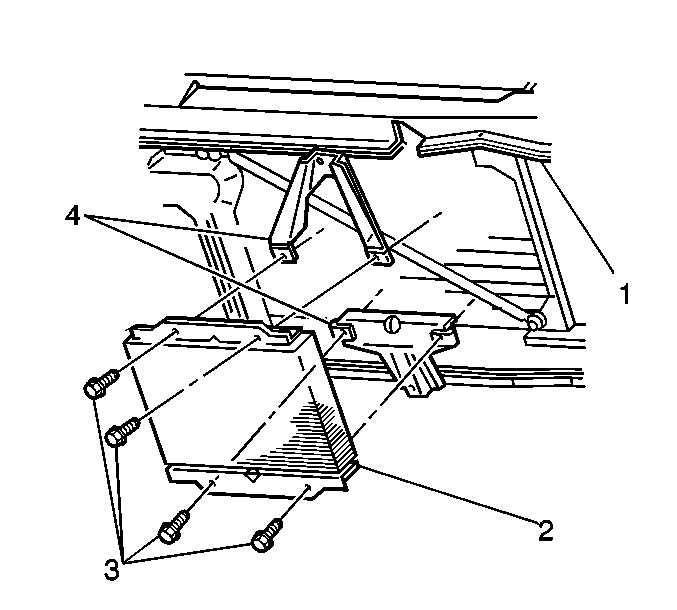Removal Procedure
Important: Flush the oil cooler and replace the oil filter in order to prevent
premature engine wear if the following conditions exist:
• Foreign material is present in the oil cooler. • The engine is damaged internally.
- Remove the grill. Refer to Grille Replacement in Exterior Trim.
- Remove the hose clip bolt (3).
- Remove the cooler line flair nuts (2) from the engine oil cooler (1).
- Remove the cooler lines from the engine oil cooler (1).
- Remove the engine oil cooler mounting bolts (3).
- Remove the engine oil cooler from the mounting brackets (4).


Installation Procedure
- Install the engine oil cooler (2) to the mounting brackets (4).
- Install the engine oil cooler mounting bolts (3).
- Connect the cooler lines to the engine oil cooler (1).
- Install the engine oil cooler hose clip.
- Install the grill. Refer to Grille Replacement in Exterior Trim.
- Refill the engine oil to the correct level. Refer to Approximate Fluid Capacities in Maintenance and Lubrication.
- Start the engine.
- Inspect the system for leaks.

Notice: Use the correct fastener in the correct location. Replacement fasteners must be the correct part number for that application. Fasteners requiring replacement or fasteners requiring the use of thread locking compound or sealant are identified in the service procedure. Do not use paints, lubricants, or corrosion inhibitors on fasteners or fastener joint surfaces unless specified. These coatings affect fastener torque and joint clamping force and may damage the fastener. Use the correct tightening sequence and specifications when installing fasteners in order to avoid damage to parts and systems.
Tighten
Tighten the engine oil cooler mounting bolts to 11 N·m
(97 lb in).

Tighten
Tighten the engine oil cooler line flare nuts (2) to 24 N·m
(18 lb ft).
Tighten
Tighten the hose clip bolt to 11 N·m (97 lb in).
